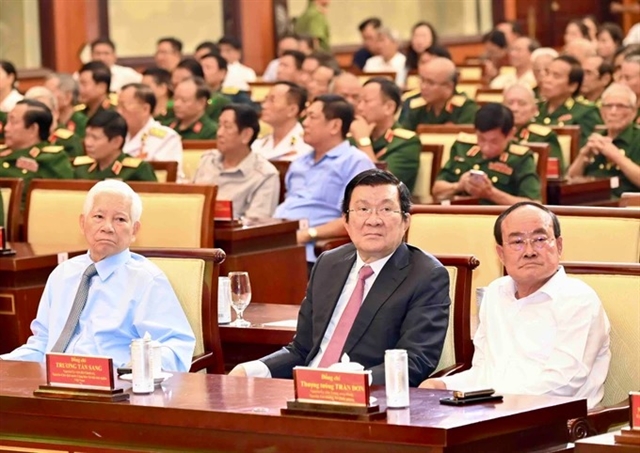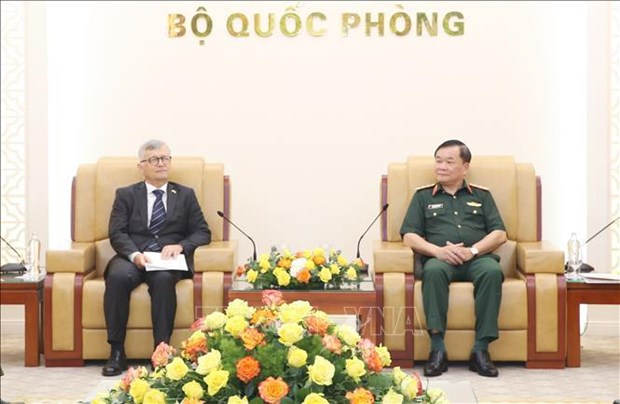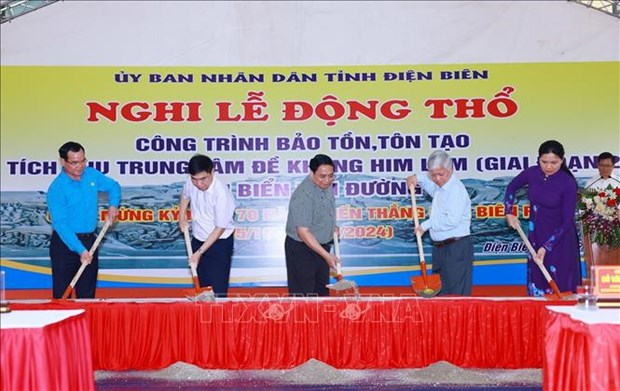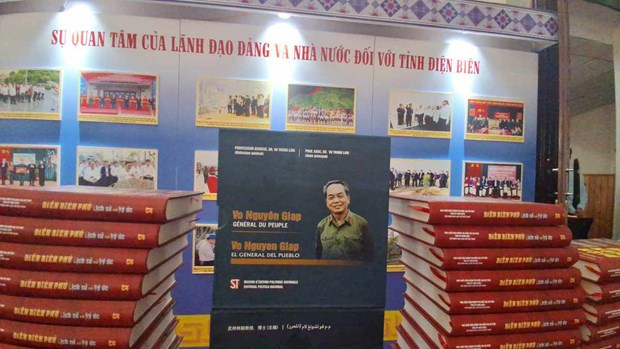 Environment
Environment

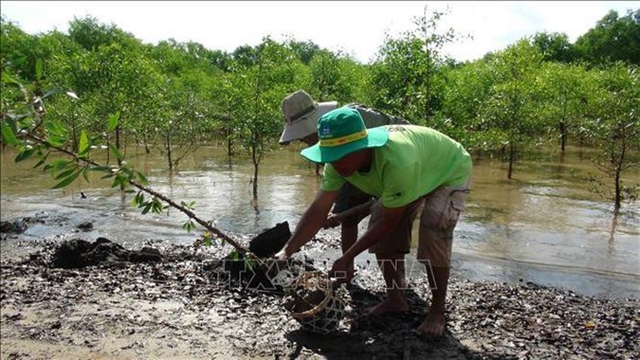
|
| A mangrove forest in Mỹ Long Nam Commune, Cầu Ngang District in the southern province of Trà Vinh. — VNA/VNS Photo Thanh Hòa |
The Ministry of Natural Resources and Environment is calling for contributions to a draft Government’s decree to concretise a number of articles in the amended Law on Environmental Protection that was approved by the National Assembly last November. The online newspaper Tài nguyên & Môi trường (Natural Resources and Environment) introduced some experts’ opinions.
Võ Tuấn Nhân, Deputy Minister of Natural Resources and Environment
The Ministry of Natural Resources and Environment received contributions and opinions of many environmentalists, scientists and experts when compiling the amended law on environment protection and the draft decree to concretise some articles in the law.
The opinions were studied and included in 13 chapters, 197 articles and appendix of the draft decree.
The draft decree is expected to clarify responsibilities and obligations of individuals, organisation and authorised agencies in environmental protection. The decree compilers expect to receive opinions focusing on water, air and soil resources, the issuance of environment-relating licences, expanded responsibilities of producers, circle economy and solid waste treatment.
The decree is an important base for the implementation of the amended law that takes effects next year. It will regulate new and difficult issues that are applied in Việt Nam for the first time.
Nguyễn Việt Anh, head of Institute of Environmental Science and Engineering under National University of Civil Engineering
Article 86 in the amended law on environmental protection states that urban areas, new residential areas, trade, production and service establishments, industrial clusters must have waste water collecting and treating systems that are separate from rainwater treatment systems.
However, there is no guidance on urban waste water treatment in the draft decree. Meanwhile, many areas in Việt Nam are using the same system for both wastewater and rain water. Combined sewer systems are sewers that are designed to collect rainwater runoff, domestic sewage, and industrial wastewater in the same pipe. Normally, combined sewer systems transport wastewater to a sewage treatment plant. After heavy rainfall, the wastewater volume in a combined sewer system can exceed the capacity of the sewer system or treatment plant. So, combined sewer systems are designed to overflow occasionally and discharge excess wastewater directly to nearby streams, rivers, or other water bodies. These overflows, called combined sewer overflows (CSOs), contain not only storm water but also untreated human and industrial waste, toxic materials, and debris.
It’s costly to build separate sewer systems for wastewater or rainwater, so I think that drainage projects and waste treatment projects could face difficulties in the future.
Specific regulations should be available for areas with existing combined sewer overflows (CSO). The regulation on waste water treatment work at industrial clusters should be imposed in areas that have yet to have a CSO.
Article 59 in the draft mentions the reuse of treated wastewater for activities of concentrated manufacture/trade or service areas or industrial clusters. It’s good but requires clear regulations on technical standards for treated wastewater to be reused.
Phùng Chí Sỹ - Vice President of Việt Nam Association for Conservation of Nature and Environment
Under the draft decree, the quality of surface water in rivers and lakes will be surveyed and assessed every three years while the quality of air will be surveyed and assessed every five years. I think that it should be five-year assessments for both surface water and air.
Article 62 mentions about safe distance from the pollution-causing facilities to residential areas. In my opinion, it’s not practical to identify the safe distance based on the pollution levels measured outside the pollution-causing facilities as they could release pollutants into the air differently. The safe distance should be calculated base on dispensability of emissions.
Nguyễn Ngọc Lý , Director of the Centre for Environment and Community Research (CECR), under the Union of Science and Technology of Việt Nam
Article 69 says that cost for solid waste treatment is covered by People’s Committees at all levels. The committees pay those who invest or provide solid waste treatment services. I think that the cost should be paid based on the “polluter pays principle” - a practice that those who produce pollution should bear the costs of managing it to prevent damage to human health or the environment.
If People’s Committees continue spending public budget to cover waste treatment costs as they do now, we will be far away from implementing the “polluter pays principle” , circular economy and Extended Producer Responsibility (EPR) - a policy approach under which producers are given a significant responsibility, financial and/or physical, for the treatment or disposal of post-consumer products.
Đỗ Thanh Bái, Chemical Society of Việt Nam
The EPR should be closely integrated with circular economy and import regulations. If we don’t tighten control over importation, we will not solve waste-relating problems in the country, for examples, plastic waste or paper waste.
In List No 6 on the types of activities that are likely to cause pollution, in my opinion, it is necessary to add some types such as hazardous waste treatment, chemical enterprises producing paints, printing ink, solar cells, rechargeable batteries because these are highly polluting activities.
Đỗ Vân Nguyệt, Director/Country Manager at Live & Learn for Environment and Community
According to the experiences of countries around the world, environment monitoring has many different purposes such as education, warning, hotspot detection, and support for state management. Therefore, Articles 101 and 117 need to be clearly divided into subjects – monitoring for State management and monitoring for community purposes. If an organisation conducts an environment monitoring for community purposes, applying the State management process would be unreasonable, unfeasible and unscientific.
We have launched a number of studies by organisations and individuals community to provide community and State bodies with evidence and material for environmental education, research, application of science and technology.
The work promotes people's participation and the private sector in dealing with community issues.
If strict regulations are imposed, they will limit the participation of this group, which goes against the spirit of the Law on Environmental Protection 2020 which advocates for the participation of the entire population in environmental protection. Therefore, we suggest that organisations and individuals need to report to the State management agency about their work and public technical information on environmental monitoring. VNS


